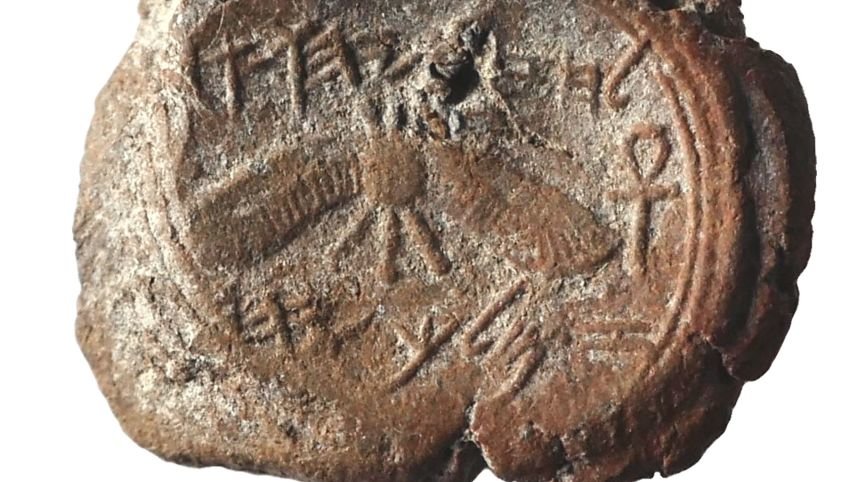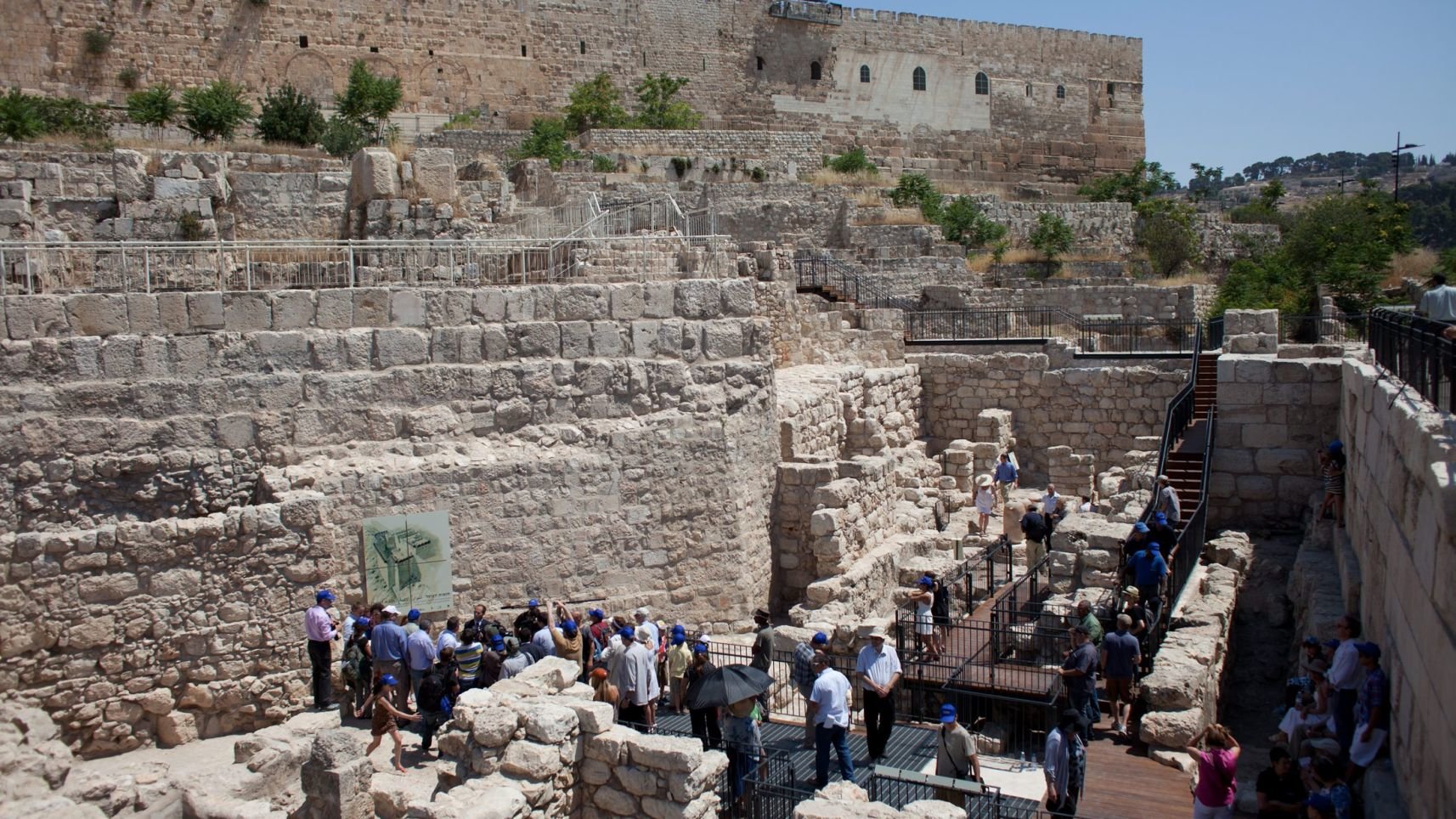
A 2,700-year-old seal impression bearing the name of the bible-era king Hezekiah has been discovered in excavations by Temple Mount in Jerusalem.
Other seals bearing the name of King Hezekiah (727 - 698 BCE) have been discovered. Not like this, though: "This is the first time that a seal impression of an Israelite or Judean king has ever come to light in a scientific archaeological excavation," stated Eilat Mazar of the Hebrew University of Jerusalem.
The oval impression on the clay seal, which was most likely set in a ring, states in ancient Hebrew script: "Belonging to Hezekiah [son of] Ahaz king of Judah." It also shows a two-winged sun, with wings turned downward, flanked by two ankh symbols symbolizing life.
The symbols indicate that the seal was created late in the king's life and shows Assyrian influence, surmises Mazar.
Though a Judean king, Hezekiah was a vassal of Assyria. He is however portrayed both in ancient Assyrian chronicles and in the bible (Kings II, Isaiah, and Chronicles II) as a resourceful man who maintained the independent standing of the Judean kingdom and its capital Jerusalem.
Late in Hezekiah's life, both the royal administrative authority and the king's personal symbols changed from the winged scarab, a symbol of power and rule throughout the ancient Near East, to that of the winged sun—a motif that proclaimed God's protection, that was employed by the Assyrian kings, including Sennacherib.
The pagan royal administrative symbol imprinted on the king's jars changed to adopt the motif of a sun with wings extended to the sides. King Hezekiah's personal symbol changed to a sun with sheltering wings turned down - and a life-symbol at the end of each wing, says the archaeological team.
This addition of the life symbol bolsters a theory that the king's personal seal was changed after he recovered from a life-threatening plague, shehin, described in II Kings 20:1-8, in around 704 BCE. "In those days was Hezekiah sick unto death. And the prophet Isaiah the son of Amoz came to him, and said unto him, Thus saith the LORD, Set thine house in order; for thou shalt die, and not live..." He did, though.
Found in the Ophel
The small inscribed clay bulla, measuring just 13 by 12 millimeters, was found during excavations of the area known as the Ophel, at the foot of the southern wall of the Temple Mount. The dig is being conducted by the Hebrew University of Jerusalem's Institute of Archaeology, under the direction of Dr. Eilat Mazar.
The bulla was discovered in a refuse dump dating to the time of King Hezekiah or shortly after, says Mazar. It would have originated in the royal building next to the dump, which apparently served to store food. The bulla was found together with 33 additional bullae imprinted from other seals, some bearing Hebrew names, their reverse showing marks of coarse fabric and thick cords that may have sealed sacks containing foods.
The impression was found while wet-sifting earth from the excavation in a sifting facility directed by Dr. Gabriel Barkai and Zachi Dvira, under the auspices of the Nature and Parks Authority and the Ir David Foundation. The bulla was discovered by Efrat Greenwald, a member of the Ophel expedition, who supervised the wet-sifting of the excavation material. Reut Ben-Aryeh, who prepared the Hebrew bullae from the Ophel excavations for publication, was the first to identify it as a seal impression of King Hezekiah.
Students and alumni of Herbert W. Armstrong College from Edmond, Oklahoma participated in the excavation.




Would be nice if all scientist could work together to bring the truth out of the Bible, rather than focus on only proving it ether right or wrong.